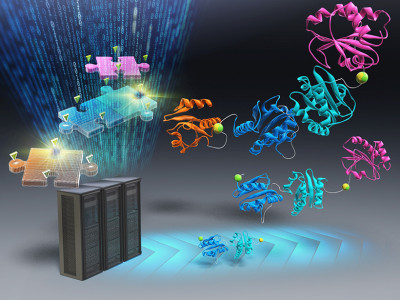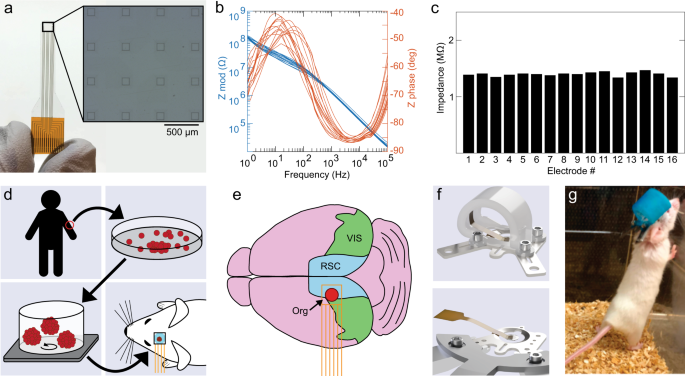2022-10-11 アメリカ合衆国・ブルックヘブン国立研究所(BNL)

・ BNL とコールドスプリングハーバー研究所(CSHL)が、遺伝子操作したムラサキコウキクサの一品種の Lemna japonica による高収率の油脂生産を実証。
・ BNL が特定した、脂肪酸合成を「プッシュ」する遺伝子と、脂肪酸分子をトリアシルグリセロール(TAG)へと「プル」する遺伝子、そして植物細胞の脂肪滴を覆うタンパク質を生産して劣化から油脂を「プロテクト」する遺伝子をウキクサに追加。プッシュ、プル、プロテクト技術は、植物組織への TAG蓄積促進に広く利用されているアプローチ。
・ ウキクサは細い茎と根を持ち、葉のような部分(フロンド)のバイオマスの大部分に油脂を蓄積する最も生育の速い水生植物の一つ。遺伝子操作したムラサキコウキクサの大量育成・収穫と油脂の抽出は、再生可能・持続可能な油脂生産の効率的な手段となる。食用作物とも競合せず、養鶏場等からの農業排水でも生育できるため、油脂生産と共に農業排水を浄化することも可能となる。
・ BNL が 1970 年代に開始したムラサキコウキクサの研究を端緒に、CSHL の研究者らがウキクサ自身による遺伝子発現抑制技術と共に、別品種の遺伝子を高効率に発現する技術を開発した。
・ BNL では、2 年間をかけて植物の油脂生産と蓄積を促進する生化学的なファクターを特定。油脂生産改変に向けたそれらの知識と遺伝子ツールの活用を目標に、本研究ではムラサキコウキクサの油脂生産ファクターを制御する遺伝子を操作し、それらの遺伝子の組み合わせによる発現の効果を調査した。
・ プッシュ遺伝子による高い脂肪酸レベルが植物の生育に悪影響を及ぼすため、同遺伝子の発現を抑えるプロモーターを追加。また、優れたプッシュ、プル、プロテクトのファクターを発現する遺伝子を構築し、個別、ペア、または全部の組み合わせによる発現試験の結果、3 ファクターの相乗作用により乾燥重量バイオマスで最大 10%の TAG 蓄積(天然物の 100 倍)を確認した。
・ 今後は、多様なソースからの3 ファクターの試験、油脂生産誘発遺伝子の発現レベルの最適化と発現タイミングの改善に加え、産業レベルの生産へのスケールアップを目指す。大型の培養容器の設計、大規模生育条件の最適化や油脂を効率的に高レベル抽出する技術の開発が主な課題となる。
・ 本研究には、米国エネルギー省(DOE)の科学局が資金を提供した。
URL: https://www.bnl.gov/newsroom/news.php?a=120813
<NEDO海外技術情報より>
関連情報
Plant Biotechnology Journal 掲載論文(フルテキスト)
Engineering Triacylglycerol Accumulation in Duckweed (Lemna japonica)
URL: https://onlinelibrary.wiley.com/doi/10.1111/pbi.13943
Summary
Duckweeds are amongst the fastest growing of higher plants, making them attractive high-biomass targets for biofuel feedstock production. Their fronds have high rates of fatty acid synthesis to meet the demand for new membranes, but triacylglycerols (TAG) only accumulate to very low levels. Here we report on the engineering of Lemna japonica for the synthesis and accumulation of TAG in its fronds. This was achieved by expression of an estradiol-inducible cyan fluorescent protein-Arabidopsis WRINKLED1 fusion protein (CFP-AtWRI1), strong constitutive expression of a mouse diacylglycerol:acyl-CoA acyltransferase2 (MmDGAT), and a sesame oleosin variant (SiOLE(*)). Individual expression of each gene increased TAG accumulation by 1- to 7-fold relative to controls, while expression of pairs of these genes increased TAG by 7- to 45-fold. In uninduced transgenics containing all three genes, TAG accumulation increased by 45-fold to 3.6% of dry weight (DW) without severely impacting growth, and by 108-fold to 8.7% of DW after incubation on medium containing 100 μm estradiol for 4 days. TAG accumulation was accompanied by an increase in total fatty acids of up to three-fold to approximately 15% of DW. Lipid droplets from fronds of all transgenic lines were visible by confocal microscopy of BODIPY-stained fronds. At a conservative 12 tonnes (dry matter) per acre and 10% (DW) TAG, duckweed could produce 350 gallons of oil/acre/year, approximately seven-fold the yield of soybean, and similar to that of oil palm. These findings provide the foundation for optimizing TAG accumulation in duckweed and present a new opportunity for producing biofuels and lipidic bioproducts.



